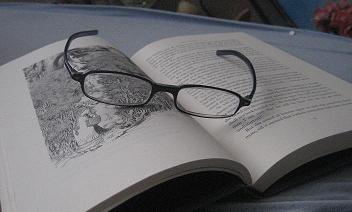Northern Africa
In ancient times there were many empires in the area, such as the Egyptians, but they all collapsed or were conquered. Most of the region was occupied by the Berber people which were then conquered by the Arabs. After the Middle ages the area was loosely under the control of the Ottoman Empire (except Morocco).
Population: 200,489,280
Climate: mostly deserts, savannah, some Mediterranean areas.
Languages: Arabic, Berber, French, English, Italian, Tribal Languages
Religions: Sunni Muslim, “indigenous beliefs”, Small numbers of Jews and Coptic/other Christians.
Governments: Republics, Dictatorship, Monarchy, Authoritarian state
- Algeria : It was a French colony from 1830 to 1963; the war of independence lasted 8 years. There was much political turmoil until the late 70’s when a new president was elected. Still, the militant Islamic Salvation Front (FIS) has been rebelling. The constitution has undergone many revisions, as recent as 1996. Currently the unemployment is at 27% (by U.S. estimates). The U.S. Gives $4.40 Million in economic assistance.
- Egypt : It was a British colony from 1882 to 1922 when Britian gave it its independence; but it was still under their strong influence until the revolutionary 50’s. A disaffected army officer named Nasser took control of the government and nationalized Egypt’s economy in 1953. In 1970 he died and another army officer, Sadat, took his place, leading an unsuccessful war with Israel. He was assassinated. In 1981 Vice President Mubarak was elected and has been in office since. The U.S. Currently has a “large assistance program in Egypt”.
- Libya : It was an Italian colony from 1911 to 1947, when the British and French took over. Independence was granted through the United Nations in 1951. In 1959 this was one of the world’s poorest countries, and then it discovered oil and became rich - but only the elite saw this wealth. In 1969 there was a coup and the Revolutionary Command Council took control, with Qadhafi at the head. In the 80’s the U.S. accused Libya of terrorism and fought militarily and with economic sanctions. In 1999 Libya agreed to hand over suspected bombers, and in 2003 they announced they were getting rid of their WMDs - in 2004 the U.S. lifted all sanctions.
- Morocco : The coast was controlled by Portugal as early as the 1500s, but France took the northern part and Spain took the southern part in the 1800s. Morocco gained its independence from France in 1956. Spain gave over parts of Morocco in 1956, ‘58, ‘69 and the remainder of the dispusted land is now called "Western Sahara" (look below). Since the 1990s Morocco has been improving its economic and political conditions by liberalizing them. Their current inflation is low and unemployment is 9.9%.
- Sudan : The largest country in Africa and one of the most diverse, Sudan was made of tiny kingdoms under British and Egyptian control. They were granted independence in 1956 but the ruling Northern politicians reneged on promises to the South, which started the 17 year civil war. Sudan’ neighbors have harbored refugees and rebels. In 1969 socialist Nimeiri was in power. A communist tried to overthrown him so he purged the country of communists, which made the Soviets withdraw support. With each law Nimeiri lost the support of different political fractions. In 1985 he was overthrown by a popular uprising. In 1989 Bashir, head of the National Islamic Front, took over. This caused the Islamic North and Tribal South to start fighting once again. The South’s Sudan People’s Liberation Movement/Army (SPLM/A) was even supported by some of the neighboring countries. Peace talks started in 2002, focusing on religion and wealth sharing, and a peace agreement was finally signed in 2005. The first national elections will be held this year (2009).
- Tunisia : It was a French protectorate from 1881 until independence in 1956, and still has close political, economic, and cultural ties with France. The ruling party, the Democratic Constitutional Rally (RCD), was the sole legal party for 25 years, probably because opposition parties were banned until 1981. President Bourguiba placed strong emphasis on economic and social development - which continues with the Ben Ali administration. They have high literacy rates, low population growth rates, relatively low poverty rates, and generally steady economic growth. This is a very stable state.
- Western Sahara : This was part of Morocco until Spain took it over, and refused to give it back when Morocco became independent. There were many violent uprisings and militant retaliations. In 1973 Spain lost control, and its own government at home was weakening. Spain didn’t know who to hand control over to - and the decision went to the international court of Justice, which said that the Sahrawi population had the right to decide who they wanted to rule. Morocco did not accept this and sent an army in. In 1976 a treaty was signed that gave 2/3 of the country to Morocco and the lower 1/3 to Mauritania - but the Sahrawi population opposed this and the Sahrawi Arab Democratic Republic (SADR) was created by a Sahrawi leader named Polisario. SADR lead a guerilla war and won the land back from Mauritania in 1979. Morocco tried to move in on this land and the war started anew. In 1991 peace talks started and they agreed to have an election to see if the population wanted to join Morocco or become independent. The election never took place because they couldn’t agree on who could vote. The dispute continues even now, with new informal talks starting sometime in 2009 (Worsnip).
1. Worsnip, Patrick. “U.N. Council favors informal talks on Western Sahara”. Washing Post. April 30, 2009. <>
Unless Otherwise Written, Source: U.S. Department of State Under Secretary for Public Diplomacy and Public Affairs Background Notes (http://www.state.gov/r/pa/ei/bgn/index.htm)




No comments:
Post a Comment